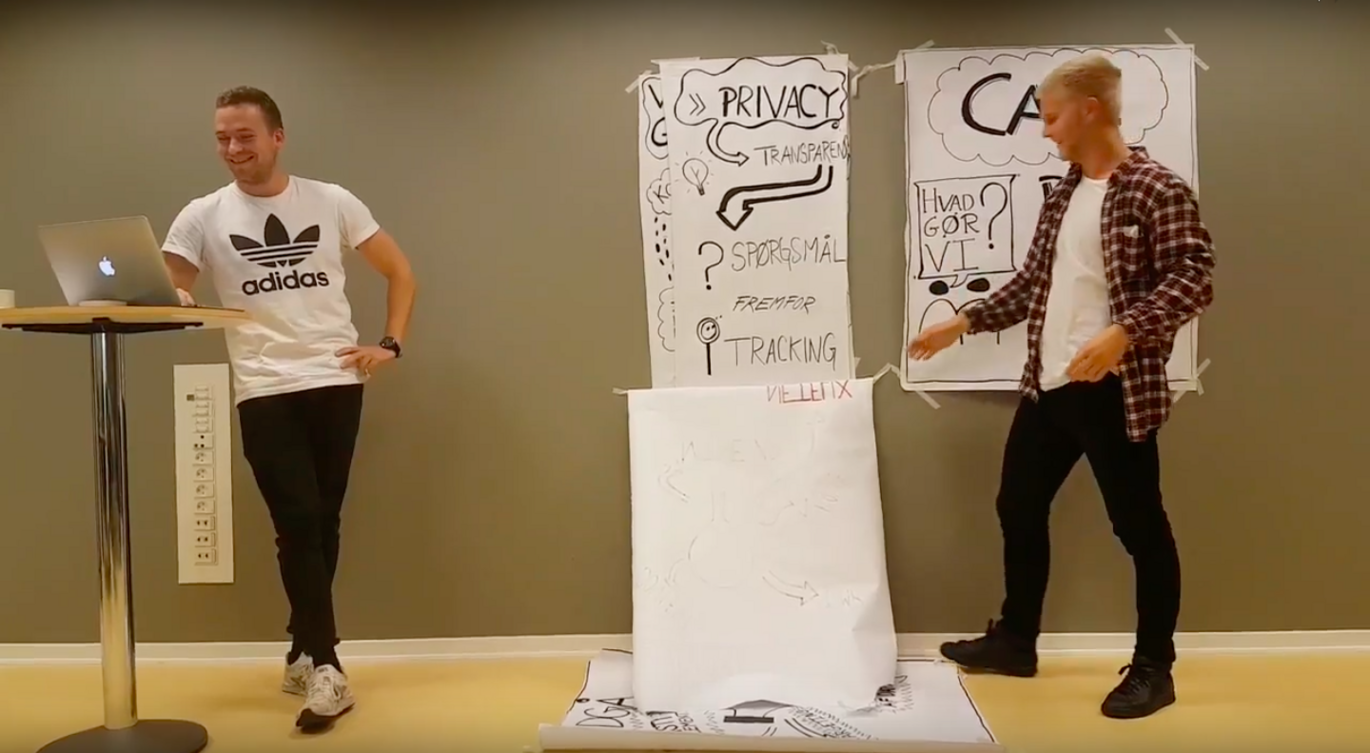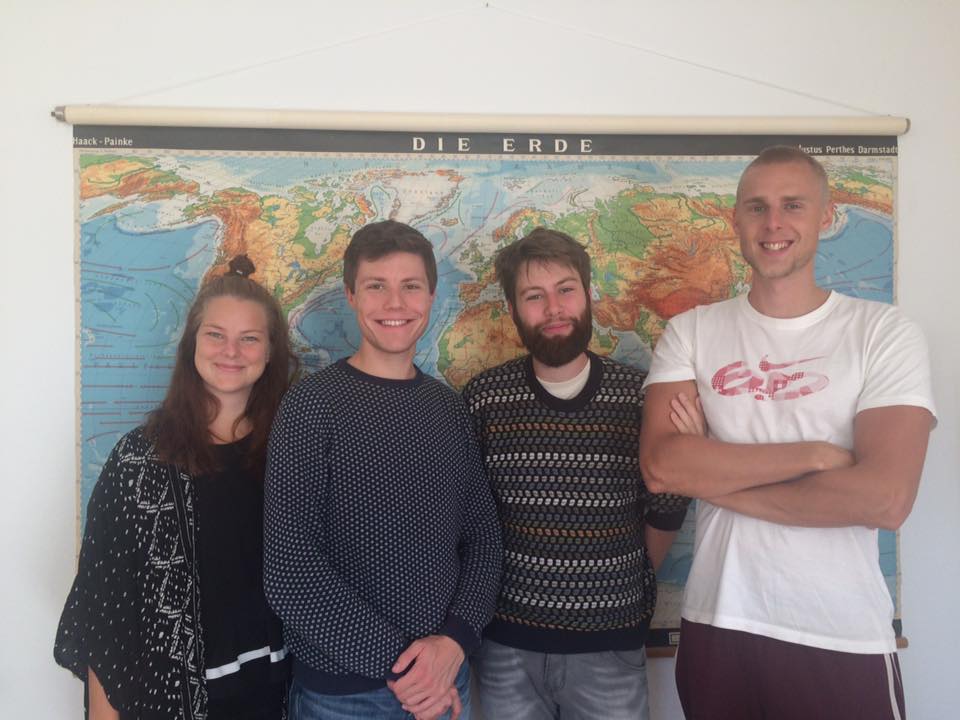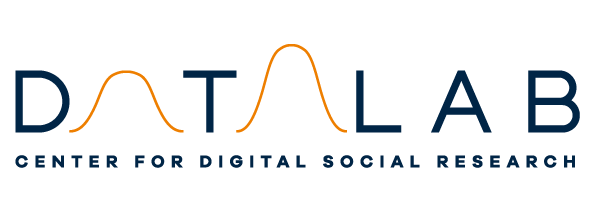MSA Student Hackathon 2016 - How it went
What do we do about adblocking and sentencing in connection with revenge porn? This was the two questions of concern in the MSA Student Hackathon of 2016.

On Friday 28 September 2016, we elected the winners of the first MSA Student Hackathon which was held in IT City Katrinebjerg in northern Aarhus within the framework of Digital Society innovation network project.
The participants were 5th semester students on the Bachelor’s degree programme in Media Studies, Aarhus University. In the week leading up to the event, the students had been working on finding a solution to one of two problems, which they were to pitch to a panel of judges by means of graphic recording.
Here you can read about the solutions proposed by the winning groups.
Case 1: Adblocking
How are privacy and earnings ensured at the same time?
Winning team:
- Laurits Flytkjær
- Natalie Lassen
- Michael Schmidt
- Amanda Rav

In order to understand the adblocking issue, we believe that it is necessary to turn back the clock to the birth of the digital news media. We believe that the issue is a result of an attempt to transfer the business model with advertising revenue serving as the cornerstone directly from print media to digital media.
In connection with printed newspapers/magazines, readers cannot deselect ads. They form part of the reading experience and are most often also visually adapted. Digital newspapers/magazines allow readers to select and deselect content and now also ads. Here, the ads are often more disruptive, as they, in many cases, are not adapted to the digital media – neither visually nor in relation to the design of the media as a website.
The difference between the characteristics of printed and digital newspapers/magazines is so significant that the underlying business models have to differ as well. We consider this the root of the problem.
In our solution, the users must always be factored in first. As part of this work, the Data Management Platform (DMP) is an essential tool to tailor the content to the users and create content that makes sense. Native advertising offers excellent prospects and is to provide users with relevant content, while also ensuring that the news media maintain profits via this form of advertising.
Furthermore, the importance of context cannot be emphasised strongly enough in this connection. The content must be adapted to the context based on the information that the media companies are provided with, thereby ensuring that the users receive value-adding content which does not have a disruptive effect.
We therefore believe that context-based native advertising is the way forward and one of the solutions to the adblocking issue.
But how do we convince the critical users?
Our answer to this question lies in the word ‘transparency’.
It is important that the users do not feel persecuted and monitored, but that they are an active part of their own data sharing. They must not feel that they are being misled. To avoid this, we suggest that users are involved and consulted more. We suggest meeting the users at eye level, for example by asking them questions about their lifestyle, areas of interest and background, possibly designed as categories of interest which they can choose.
This way, the users are made aware of and involved in their own data sharing. This can contribute to greater tolerance towards ads and the transfer of data and serve as a tool to target content to the individual user, if data is used as an editorial control tool.
Case 2: The Danish Penal Code and privacy
How is the right sentencing ensured in relation to the invasion of privacy in connection with data sharing/data access without prior consent?
Winning team:
- Ida Worm
- Tobias Kramer
- Lasse muxoll
- Morten Lindhardt

Our solution are based on the Viborg folder – a digital folder containing nude pictures of lower-secondary school girls from Viborg. We have chosen the Viborg folder as a case, because it exemplifies the problem that arises out of the dichotomy between privacy and defamation.
The pictures in the Viborg folder are a major problem, as they have been taken out of the context in which they were intended to be used. They have been shared on the Internet. Those who share the pictures do no longer perceive the sharing as defamation, but merely as sharing content on the Internet.
The fact is, however, that the sharing of these pictures is a problem in relation to the invasion of privacy, and it is also a huge moral issue.
We have two proposals for a solution on how to find the right sentencing in this case.
Proposal 1
The first proposal entails preventive action aimed at ensuring a change of attitude and rehabilitating offenders. We propose reinforcing efforts to make young people realise that revenge porn is not a victimless crime. We believe that this could form part of sex education, for example.
Furthermore, we propose placing ex-offenders under an obligation to meet with a victim to ensure that the offenders do not repeat their violations, and that they understand the consequences of their actions.
Proposal 2
The second proposal concerns the Danish Penal Code specifically. Here we propose an amendment to section 263, which is intended to protect the privacy of individuals. However, the section is only targeted at analogous messages. To eliminate any doubts, we propose incorporating digital media into the section.
The following subsection concerns those who gain unauthorised access to other people’s archives. We propose rewriting this section to relate to those who gain unauthorised access to other people’s files and documents.
Finally, we propose increasing the penalty for those organising the sharing of pictures without prior consent. Such parties should be regarded as instigators, enabling the organised violation as exemplified by the Viborg folder.

